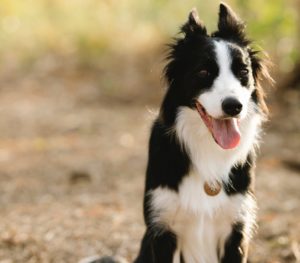Pets & Humidity
The summer in DFW has begun with strange weather – stretches of thunderstorms and short bursts of heavy rainfall, along with temperatures that don’t quite match our expectation of late July heat in North Texas. But, if you’ve lived in the Metroplex for any length of time, you know that the heat is not the only thing to beat. Factoring in the outside humidity is essential in preparing for your day. Humidity is used in combination with the air temperature to calculate the body’s perceived temperature of the air outside, or the heat index.
So, in context to our usual topic of discussion here – how does the humidity affect your fur babies? Take a look at the tips and points to ponder below to know the best practices to keep your pets safe.

The Importance of Keeping Humidity in Mind
As Dr. Barry Kellogg of the Humane Society Veterinary Medical Association reminds us, “Animals pant to evaporate moisture from their lungs, which takes heat away from their body. If the humidity is too high, they are unable to cool themselves and their temperature will skyrocket to dangerous levels—very quickly.”
With high humidity, cooling by panting becomes an extremely inefficient process. Exercising with your dog, even one that’s fit, can become a dangerous undertaking. In North Texas, even limiting exercise to early morning and late evening can still bring with it high levels of humidity. Always check the relative humidity and heat index before going for a run.
At-Risk Pets
Some pets are just more prone to problems in the heat and humidity. Know to be more vigilant of the weather conditions if you have one of the following in your family:
• Young pets up to 6 months old
• Older animals (large breed dogs over 7 years of age, small breed dogs over 14 years of age, cats over 12 years of age)
• Short-nosed dogs (such as bulldogs and pugs), who typically have a hard time breathing
• Overweight or ill pets
The Dangers of Heatstroke
If the heat index has been on upward trend, be sure to look out for symptoms of heatstroke in pets exposed to the outdoor elements. These symptoms can include excessive panting, thick saliva, staggering, seizures, bloody diarrhea, and vomiting.
If you suspect your pet is suffering from heatstroke, be sure to contact us at AVC. However, you can immediately move your pet to a cooler or air-conditioned area and apply water-soaked towels or clothes to their head and chest. If your pet is alert enough, give them cool (not cold) water to drink or ice-cubes to lick.
What You Can Do
To prevent a dangerous situation in your pet family, here are some further quick tips to know and implement as we all venture through the Texas summer.
• Always check the weather report
• Keep outdoor pets in the shade and well-ventilated areas
• Never leave your pet in a parked car
• Minimize exercise in hot weather
• Provide plenty of fresh, cool water
• Ask AVC!

Latest Blog
Mar
09, 2023Feb
23, 2023Jan
05, 2023Mar
26, 2024Mar
26, 2024Mar
26, 2024Mar
23, 2023